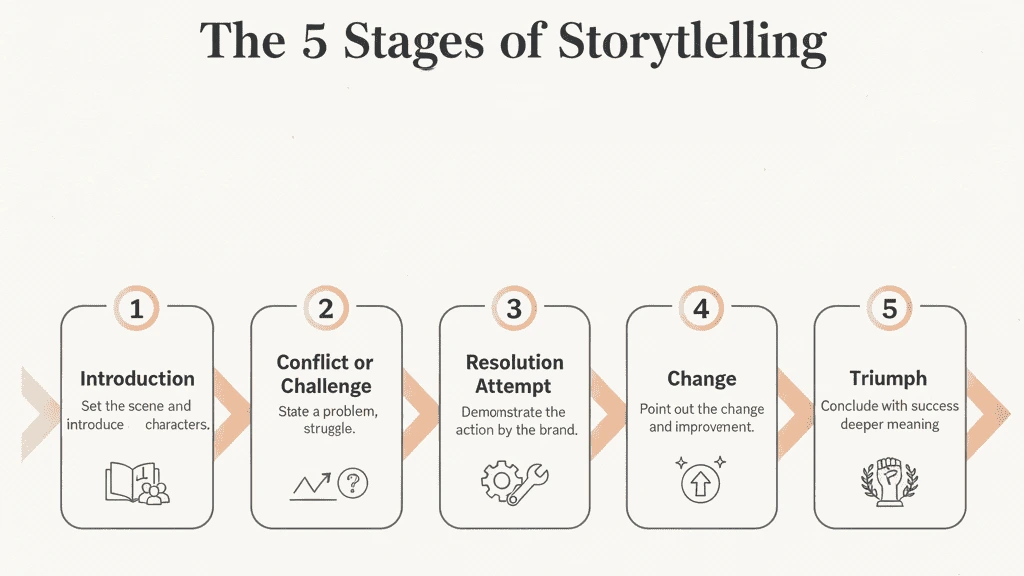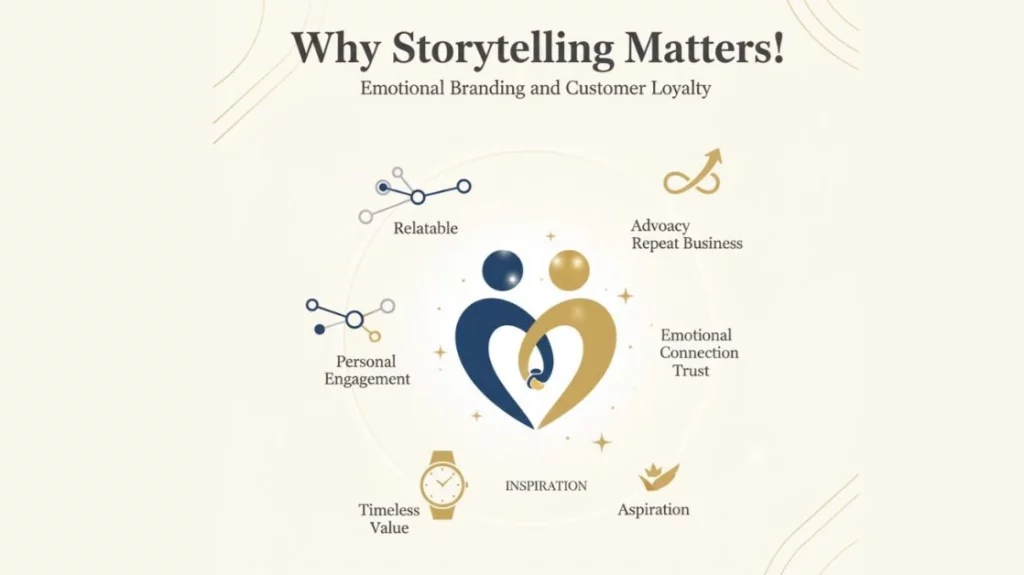In digital world today, where ads are everywhere and consumers have many options to choose from, simply selling a product don’t serve the purpose especially for premium brands. Customers don’t just want a product they want a connection, a sense of belonging and an experience that reflect with their values. That is where storytelling comes in picture. And it is more powerful than a sales pitch.
For luxury brands, storytelling isn’t just a marketing tool—it’s the very foundation upon which trust, loyalty, and emotional bonds are built. Let us see why storytelling beats selling, how it transforms brand perception and how you can craft a narrative to attract, engage, and retain your audience.
Why Straight Selling Fails in Premium Branding?
Ok now let’s be honest, most people are tired of aggressive sales tactics. Pop-up ads and flashy discounts not inspiring anymore instead they inspire resistance. Premium audiences, in particular, are more discerning. They’re looking for authenticity, craftsmanship, and meaning behind what they buy.
When a brand only focuses on selling, it overlooks what customers want actually! They want an experience that reflects their identity or the aspirations. Selling makes customers feel like transactions, story-telling treats them as humans.
The Power of Storytelling in Premium Brands

Storytelling creates an emotional connection between the brand and its audience. It communicates what a product is also why it exists! Storytelling shares the journey of the brand and the values also people behind it.
Premium brands grow on perception, reputation, and emotional value. Storytelling helps reinforce these factors by allowing brands to
- Showcase their heritage, craftsmanship and attention to detail!
- Inspire customers with purpose-driven narratives
- Create memorable experiences that go beyond the product
- Luxury is more than price!! it’s the story which helps a brand to be desirable.
What Does Brand Storytelling Look Like?
Take Apple, for instance. They just don’t sell phones! they say a story of innovation, simplicity and creativity. Their campaigns focus on how technology is empowering human potential, not on listing product specifications.
Or look at Rolex! they tell stories about timeless achievement, endurance, and excellence. Aligning the brand with personal success rather than just selling a watch.
They are not advertisements of products but narratives that customers desire to be part of.
The 4 P’s and 5 P’s of Storytelling:
Being able to create a powerful story does not happen by accident. Several brands use models such as the 4 P’s and the 5 P’s of storytelling to make sure that the storytelling is relatable.
The 4 P’s of storytelling:
People – Who is the story about? (Founders, artisans, customers)
Place – Where is the story set? (Heritage location, global markets)
Purpose – Why does the brand exist? (Solve problems, enrich lives)
Product – How does the offering fulfil this purpose??
The 5 P’s of storytelling:
People – whom your story is about? and who is your audience??
Problem – Determine the problems/ gaps.
Promise- What change or solution does the brand promise?
Proof – support it with reviews, design, or statistics.
Personality – Inject the voice and character of the brand.
Application of these frameworks makes sure that the stories are structured, purposeful and impactful.
The 5 Stages of Storytelling: The Process of Turning Facts into Experiences

What are the 5 stages of storytelling?
These levels contribute to developing a plot, which is likely to hold the audience:
- Introduction – Set the scene and introduce the characters
- Conflict or Challenge – State a problem, struggle.
- Resolution Attempt – Demonstrate the action by the brand.
- Change – Point out the change and improvement.
- Triumph – Conclude with success and deeper meaning
The stages help premium brands craft personal, relatable and ultimately inspiring stories.
Why Storytelling Works in Digital Marketing
Digital marketing storytelling extends beyond written expression. It is about bringing together images, sound of voice, experience of the site and social media feeds into a holistic narrative.
Instead of a brochure, a brand website should be an experience to be lived in. Social posts should reflect authenticity, it should not be sales oriented. Videos must communicate feelings, hardships, or celebrations.
Such frameworks as a storytelling brand book can be used to ensure consistency across the platforms. Be it an Instagram reel or a long-form blog, all the touchpoints ought to support the narrative the brand is presenting.
Why It Matters: Emotional Branding and Customer Loyalty

The value of storytelling in branding can never be overstated. Stories create an emotional connection that leads to trust, advocacy, and repeat business.
Premium customers often buy based on how a brand makes them feel rather than its features. Storytelling provides human touch to the brand, making it relatable without diluting its exclusivity and more approachable.
Luxury brands use storytelling to create story of aspiration, elegance and timeless value.
These stories become a part of their customers identity, making brand engagement feel personal instead of just buying the product.
Where to begin: Developing the Narrative of your Brand!!
For premium brands which want to shift from selling to storytelling, here are the steps to be followed.
Define your purpose – Why does your brand exist other than making money?
Know your audience- who are they? what are their aspirations, problems, and values?
Share the people behind the product – Artisans, creators, customers
Use visuals, voice, and experience to build immersive stories
Keep it consistent – Across platforms, campaigns, and messaging
A story that is well told does not only attract customers, it turns them into advocates.
Conclusion:
Storytelling is not an optional part in the design of a premium brand, it is the magic ingredient that can transform products into experience and customers into brand ambassadors. Whereas selling is concentrated on the deal, storytelling is based on relationships, trust, and attachment of the brand to the underlying emotions.
Through organised storytelling tools such as the 4 Ps, 5 Ps and 5 stages, the luxury brands can create authentic, meaningful and memorable stories. Stories foster long-lasting impressions that no sales pitch ever has the ability to achieve, whether via digital channels, or social media, or even via experiential marketing.
With premium branding, there is no need to make people buy something it’s about inviting them into a story worth living.


